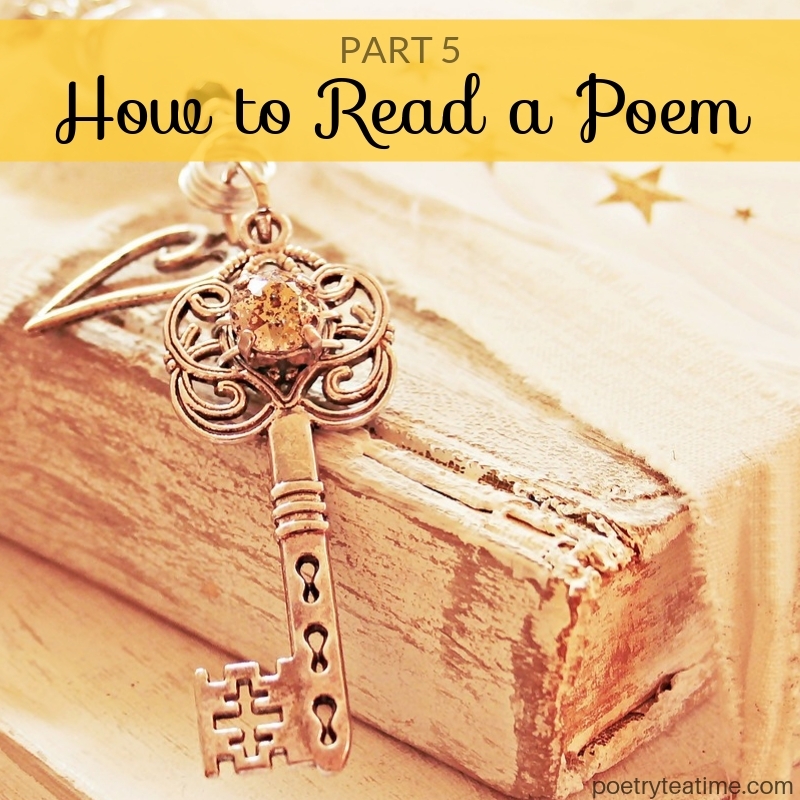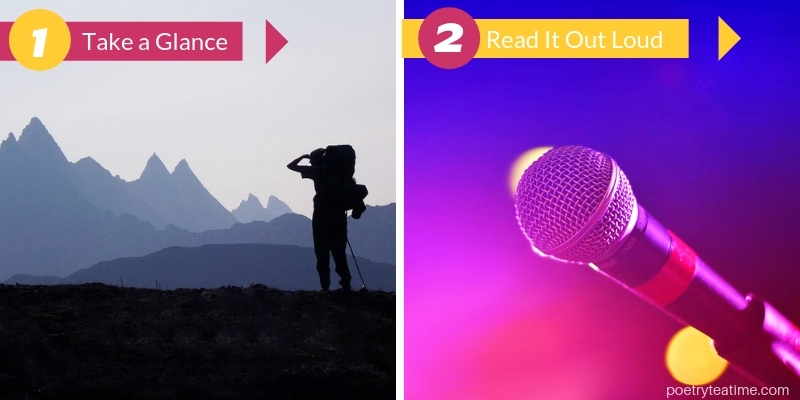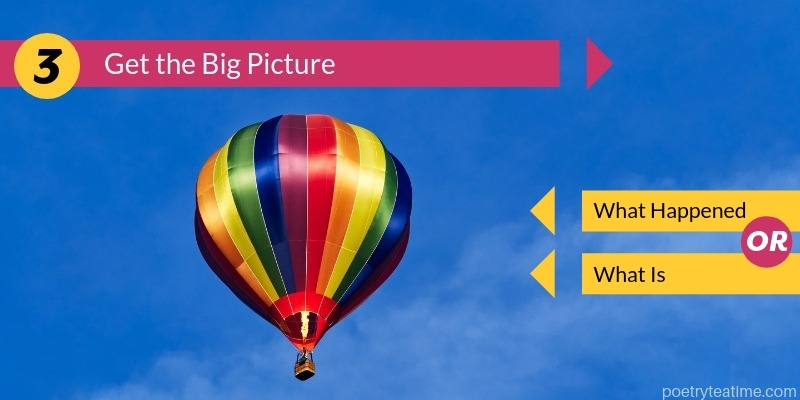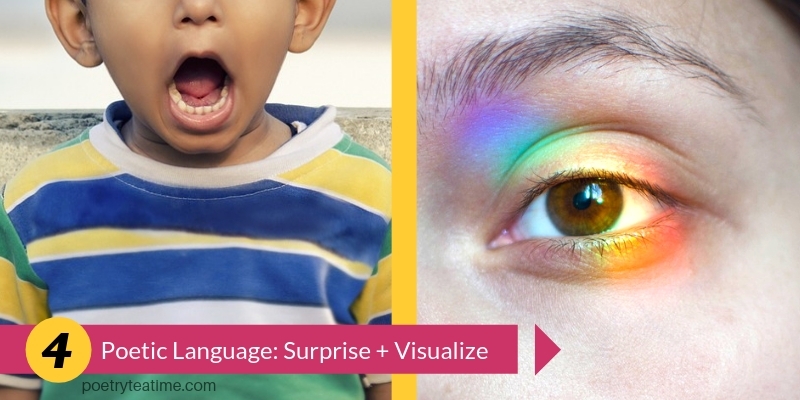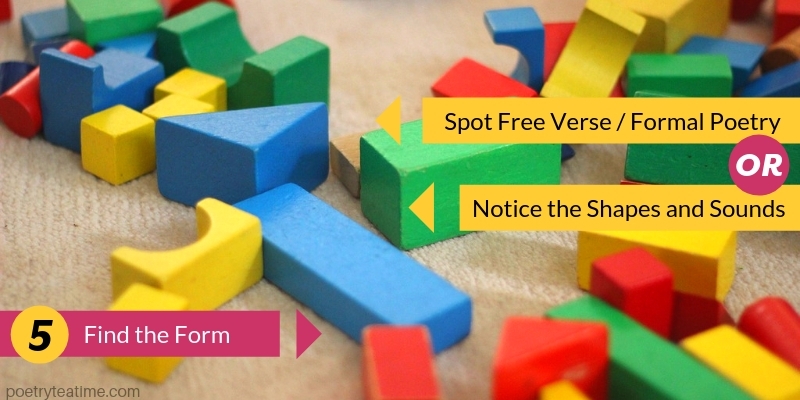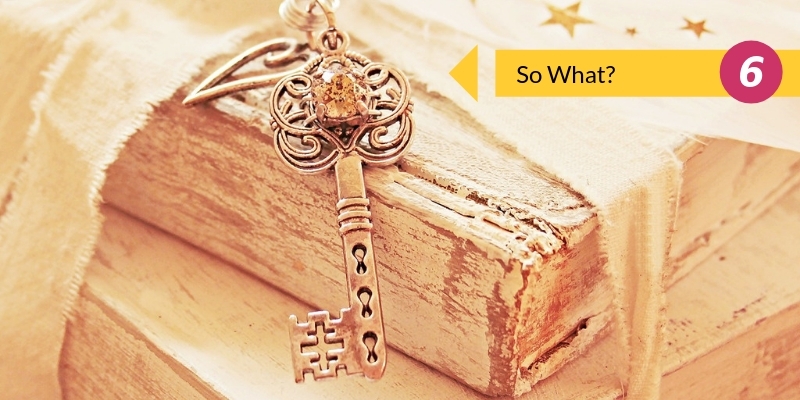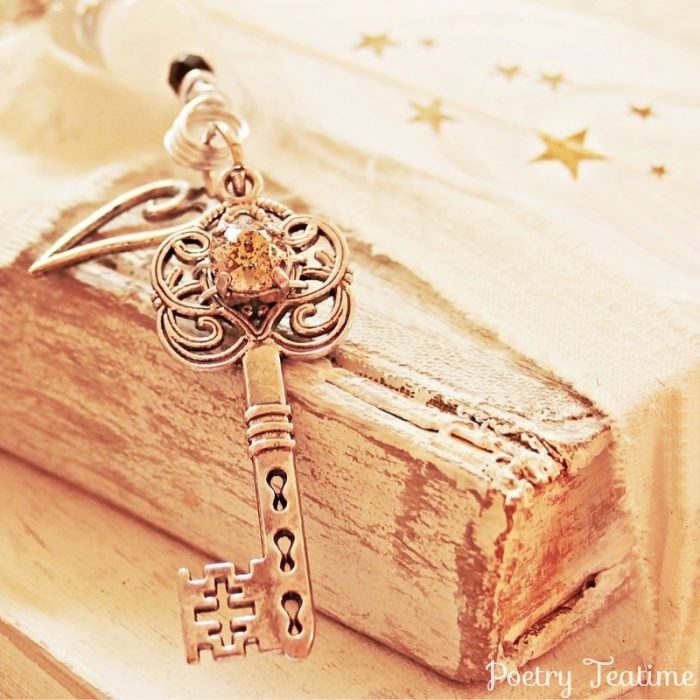Today, we’ll be wrapping up our series on how to read a poem by asking, “So what?” Now that we’ve read some poems, dug into poetic language, and examined form, it’s time to bring everything we've learned together.
Let's begin with a wrap-up of what we've already learned. At the bottom of the page, you can also find the step-by-step illustrations from this series that will give you a visual look at how to read a poem.
Part 1: Getting Started
- Take a glance: First, just look at the poem. Is it long or short? Do the lines and stanzas all look the same, or are they all different? Get your expectations ready to go.
- Read it out loud: Read the poem aloud by using the punctuation marks to tell you when to start, stop, and pause, not the line breaks. Enjoy the sounds of the poem!
Part 2: The Big Picture
Get a sense of what the poem is about by summarizing either what happened or what is. This is the most helpful section if you find a poem too confusing or different to understand!
- What Happened: A what-happened poem has some sort of action, either with a beginning-middle-end plot or the poet's choice to do or not do something.
- What Is: A what-is poem describes something that doesn't change, even if we learn more about the thing as the poem goes on.
Part 3: Poetic Language
Poetic language is the metaphors, images, and other tools of sound and meaning that the poet uses to make us look at the world in new ways. Here's how to spot and read these elements.
- Surprise: Poetic language stands out because it's surprising and different from the way we normally talk and see the world. Pay attention to what parts of the poem surprise you, because that's where you'll find the poetic language!
- Visualize: Picture the images in your mind. Taste, touch, smell, or feel the comparisons the poet is making. Why do you think they used those elements? How do they change the way you feel or look at the world?
Part 4: Find the Form
There are a couple of different ways to talk about a poem's form. You can either...
- Spot Free Verse or Formal Poetry: Does the poem have a regular pattern of lines, stanzas, and rhymes, or is each line and stanza different? What rules is the poet following?
- Notice the Shapes and Sounds: For a more general overview of the form, pay attention to how the poem looks on the page. Where are the lines short or long? Are there stanzas (poetry paragraphs)? Are any sounds or lines repeated?
Now that we've appreciated these elements of the poem individually, it's time to bring everything together and ask ourselves, "So what?"
The Point of the Poem
While it's wonderful to understand and appreciate what the poem says, its form, and the language it uses, that's not the end of the story. Why does the poem matter? What's the point?
First, think about the choices the poet made.
- Why do you think the poet wrote about this subject?
- Why might they have chosen the form and poetic language that they used?
Now, think about how the poem affects you.
- How does it make you feel?
- Does it change the way you see yourself or the world?
Last, if you were to tell someone else one reason why they should read the poem, what would you say?
And that’s it! Remember that each poem is different, so you don't have to follow every single step every single time you read a poem. Only use the steps that help you understand the poem better.
If you really like a poem, be sure to share it with someone so they can enjoy it too! Now go read some poetry!
How to Read a Poem
Part 1: Getting Started
Part 2: The Big Picture
Part 3: Poetic Language
Part 4: Find the Form
Part 5: So What?
